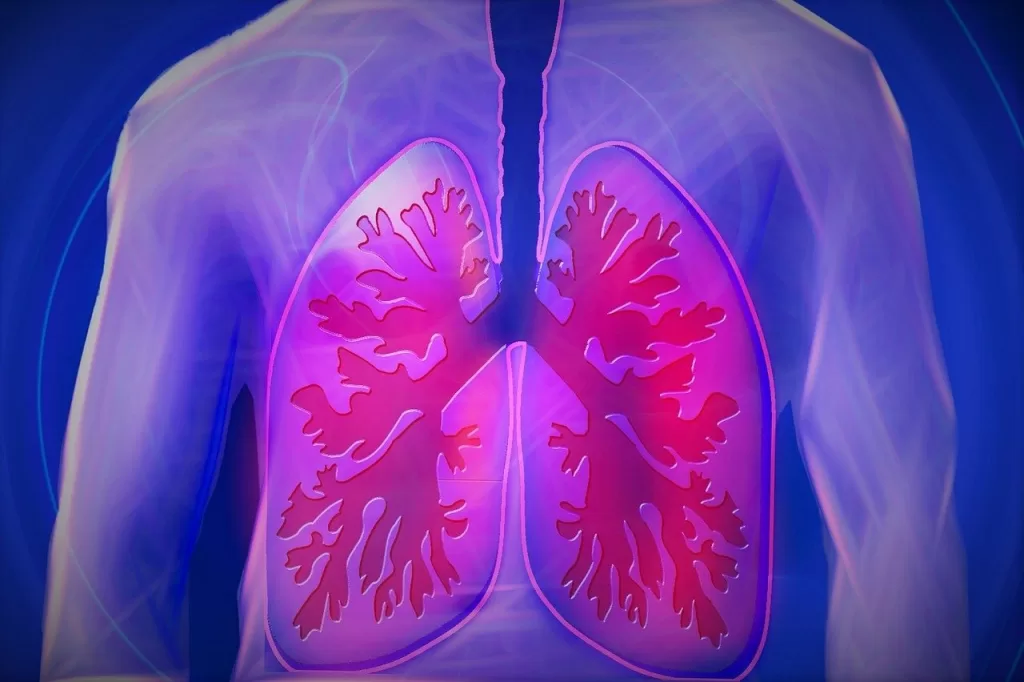Do you have an idea of how to tell if your lungs are inflamed? Lung inflammation, also known as pneumonitis, is a condition where your lungs become irritated and inflamed due to various causes. Identifying signs of lung inflammation is crucial for early detection and appropriate medical intervention. Here, I will explore the common signs and symptoms of lung inflammation for you, along with methods to diagnose this condition for timely treatment.
Signs and Symptoms of Lung Inflammation
- Persistent Cough: One of the initial signs of lung inflammation is a persistent or chronic cough. The cough may produce mucus or phlegm and might be accompanied by a sore throat.
- Shortness of Breath: Feeling breathless or experiencing difficulty in breathing, especially during physical activities or even at rest, can indicate lung inflammation. The inflamed lungs struggle to efficiently take in oxygen and expel carbon dioxide.
- Chest Pain or Tightness: Lung inflammation can cause chest pain or a feeling of tightness in the chest. This discomfort may worsen with deep breaths or coughing.
- Wheezing: Wheezing is a high-pitched whistling sound that occurs during breathing. It is caused by narrowed airways, which can be a result of inflammation in the lungs.
- Fatigue: Lung inflammation can lead to decreased oxygen intake, causing fatigue, weakness, and reduced energy levels. Individuals may feel excessively tired and lethargic.
- Fever and Chills: Lung inflammation can trigger an immune response, resulting in a fever. Elevated body temperature and chills may accompany the inflammation.
- Phlegm with Blood: If lung inflammation persists or worsens, it can cause blood-streaked phlegm or coughing up blood, known as hemoptysis. This warrants immediate medical attention.
Diagnosing Lung Inflammation
- Physical Examination: A thorough physical examination by a healthcare professional involves assessing symptoms, listening to the lungs with a stethoscope for abnormal sounds, and checking for signs of respiratory distress.
- Chest X-ray: An X-ray provides images of the lungs, allowing healthcare professionals to identify areas of inflammation, infection, or abnormalities in lung tissue.
- CT Scan: A computed tomography (CT) scan provides detailed cross-sectional images of the lungs, enabling a more precise assessment of lung inflammation and associated conditions.
- Pulmonary Function Tests (PFTs): PFTs measure lung function, including the capacity to inhale and exhale, to assess the severity of inflammation and its impact on breathing.
- Sputum Analysis: Analyzing a sample of mucus or phlegm can help identify the presence of infection or inflammation in the respiratory tract.
- Blood Tests: Blood tests, including a complete blood count (CBC) and markers of inflammation like C-reactive protein (CRP) and erythrocyte sedimentation rate (ESR), can provide valuable information about the presence and extent of inflammation.
- Bronchoscopy: A bronchoscopy involves inserting a thin, flexible tube with a camera into the airways to visualize the lungs, collect tissue samples, and assess for inflammation or infection.
Detecting signs of lung inflammation early on is crucial for timely diagnosis and appropriate treatment. If you experience persistent symptoms indicative of lung inflammation, it’s essential to consult a healthcare professional promptly for a thorough evaluation and diagnosis. Seeking timely medical care can help you to manage lung inflammation effectively and prevent further complications.

